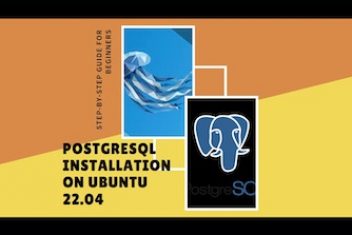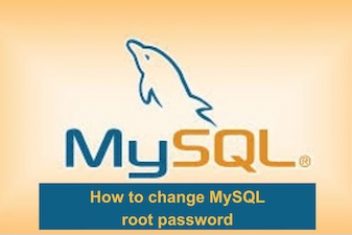The basic goal of any database should be to collect information, organize it and provide quick access to it. Databases are the backbone of every modern business application. Open source databases initially appear to be an attractive alternative to costly solutions from Oracle, Microsoft or IBM . As databases are becoming more voluminous and complex, open source platforms such as MySQL or PostgreSQL are increasingly competing with proprietary products in specific areas. In this article, we will outline the most used open source best database software.
Read: How to Use and Connect MariaDB GUI and Command Line Clients
TYPES of databases
Relational databases
It should be reminded that there are different types of databases. On the one hand, there are relational databases , which are currently well established. These serve to organize company information and easily extract data when you need it. The information is collected in tables and related fields.
Relational databases are the most important component of modern multi-layer software: They form the central storage location for information of all kinds. Tables and their links to one another can be used to map any data from the real world – invoices, timetables or orders in aircraft construction as well as web-based wiki Systems .
Read: Why End-of-Life Isn’t the End of the Road for Your Software
NoSQL databases
On the other hand, there are those known as NoSQL (Not only SQL) databases, since this type of databases avoid the use of SQL, which is a specific domain language used in programming, designed to manage and retrieve information from relational database systems. In databases with SQL language, the attributes of an element appear in different columns, while in a NoSQL all the attributes are in the same column in order to save space.
Object oriented databases
Another model is the object oriented databases that represent data in the form of objects and classes. It is organized based on objects instead of actions. The object can be from a search result to a table whereas a class is a collection of objects. The database is capable of storing different types of data, such as audio, video, images … This type of databases is generally written in object-oriented programming languages such as Java, C or Smalltalk.
Read: Best Free Graphic Design software for Linux
Distributed and centralized databases
In distributed databases, the different parts of the database are stored in various physical locations, and in which the processing is dispersed or replicated throughout different points of a network.In Centralized databases on the contrary, data is stored in one centralized location and users in different premises can access its data.
Graph databases
Graphic databases are graphics oriented. They are a type of a NoSQL database that use graph theory to store, consult and map relationships. To read the information, you must read the nodes or connectors (connection points of the data in the tables), generating a natural language.
Database in the cloud or on-premises?
Databases can be hosted in the cloud or in the company itself (locally). The trend, however, is increasingly to transition to the cloud, whether public, private or hybrid, given that you pay only for what is consumed, based on storage and you will avoid taking over the maintenance of the servers of this scalable and highly available system. However, there are companies that use both systems.
Read: Quick Guide to Installing PostgreSQL on Ubuntu 22.04
The most popular open source database software
Just by looking at the typology one realizes that the database is not a world that is within everyone’s reach. However, we have dared to compile some of the best free database software .
MariaDB
MariaDB is one of the most popular database servers worldwide. The solution was developed by the original creators of MySQL open source(considered the most important open source database in the world), and is used by technology giants such as Wikipedia, WordPress or Google. As mentioned on the MariaDB website, it converts data into structured information in a wide range of applications, from banking to websites. The program is fast, scalable and robust, with a rich ecosystem of storage engines, plug-ins and many other tools that make it very versatile for a wide variety of use cases.
According to the company Arsys, “it can be used anywhere where MySQL was previously used. As it is a compatible system, any software that previously used MySQL is able to continue working with MariaDB as well. Therefore, MariaDB can be used in any newly created project, as well as exchanging MySQL for MariaDB in practically all projects that may already be in production. The step is immediate and does not require changing anything in the code, simply install MariaDB and recreate the databases and tables on the new system. ”
MySQL
MySQL has been on the market since 1995 and is currently owned by Oracle. MySQL is a database management system that has a double license. On the one hand, it is open source, but on the other, it has a commercial version managed by Oracle .
Read: How to install MySQL on Ubuntu 18.04
It is currently the most famous and widely used open source database in the world. According to digital marketing company NeoAttack , “Similarly, we can find others such as Oracle itself or Microsoft SQL Server. They all have the same purpose and are used in the same environment, which is nothing more than web development, and they are the ones that are currently most used to shape and facilitate communication between websites and servers ”.
MySQL “serves to store all the information you want in relational databases, as well as to manage all this data with little complications thanks to its visual interface and all the options and tools available to it. It is essential, especially on websites that have the option to register users to log in, ” they added.
MySQL Community Edition is the free download version, available on more than 20 platforms and operating systems, including Linux, Unix, Mac and Windows.
Among the disadvantages that some of its users comment on is the slow processing for large tables, so it is not recommended for agile developments.
PostgreSQL
PostgreSQL is a powerful open source object relational database system with more than 30 years of active development that has earned it a strong reputation for reliability, robustness and performance. Like many other open source projects, PostgreSQL development is not carried out by a specific company or person, but is led by a community of developers.
This community is called the PGDG (PostgreSQL Global Development Group).The PostgreSQL community offers many useful places to get acquainted with technology, discover how it works and find career opportunities”.
Some of its advantages that stand out are: unlimited installation, great scalability, the graphical tool pgAdmin that is used to administer the databases in PostgreSQL intuitively, SQL Standard that implements almost all the functionalities of the ISO / IEC 9075: 2011 standard, the power and robustness and great variety of extensions.
On the contrary, it should be borne in mind that it is relatively slow to insert and update small databases since it is designed for a high volume of information. They also lack online or telephone support to answer questions or problems. In any case, they offer an introductory course to users.
MongoDB
Within the NoSQL databases, probably one of the most famous is MongoDB. It is a NoSQL database oriented to open source documents.
NoSQL means that instead of saving data in tables as it does in relational databases, MongoDB saves data structures in JSON type documents with a dynamic schema (BSON), making integration of data in certain applications more easy and fast. The base is used by large companies, in fact it is known as ‘the database of giant ideas’.
Read: How to install MongoDB on Ubuntu 20.04 or 18.04
There is a user manual for MongoDB that is under Creative Commons license. According to some experts, MongoDB is especially useful in environments that require scalability.
However, the problem that some experts point out is the recent change of license of the database in order to increase benefits. Among the drawbacks that some users point out is the difficulty of coding and learning.
SQLite
Another relational database system, SQLite code belongs to the public domain and is free for any use, whether commercial or private. In its version 3, SQLite allows databases up to 2 Terabytes in size and also allows the inclusion of BLOB-type fields (large binary objects). Each new launch is preceded by numerous tests and users are kept up-to-date of all the errors, which gives it a very reliable reputation.
SQLite is the most widely used database engine in the world. SQLite is integrated into all mobile phones and most computers and is included in countless applications that people use every day. However, its use is not recommended for client / server applications, for websites with large amounts of transactions or for databases that are too large.
The company launched in 2000 and while they acknowledge that “the future is always difficult to predict,” the developers’ intention is to stay dynamic until 2050. “Design decisions are made with that goal in mind,” they say.
Couchbase Server
Couchbase Server Is a free database created by the Apache project. It does not guarantee 100% data integrity. It highlights its large administration console in which you can access a lot of data in a very easy way. It is based on NoSQL technology.
Couchbase Server delivers unmatched performance at any scale, in any cloud. With features such as memory architecture first, geographically distributed implementations and workload isolation ”.
Firebird
Firebird is a relational database that offers many standard ANSI SQL features that run on Linux, Windows, MacOS, and a variety of Unix platforms. Firebird offers excellent concurrency, high performance and powerful language support for stored procedures and triggers. It has been used primarily in production systems since 1981.
Among the advantages, its drivers include, among others, the simplicity of its installation, which does not consume large resources on the server or free support for the community. As disadvantages, experts say that it does not include integrated replication support (only as an add-on), which lacks temporary tables and integration with other database systems and the absence of reliable authentication in Windows compared to other OS systems.
If you like the content, we would appreciate your support by buying us a coffee. Thank you so much for your visit and support.



